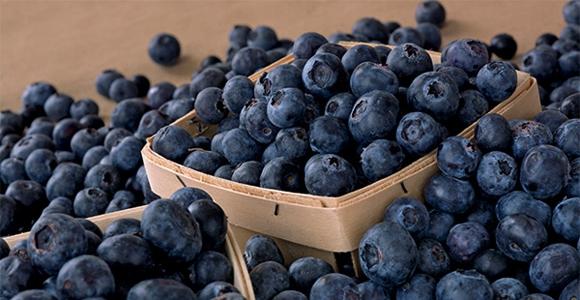The powdery mildew disease usually does not develop on blueberry leaves until midsummer after the crop is harvested.
Symptoms:
- A white fungus growth on the upper leaf surface of some cultivars, or it may be indistinct and confined to the lower leaf surface.
- Chlorotic spots with reddish borders are common on the leaf surface and may be mistaken for symptoms caused by the red ringspot virus.
- The leaves show light green, yellow or reddish areas and puckering.
- Water-soaked spotting is visible on leaf undersides. In severe cases, plants may defoliate.
Disease cycle:
- At the end of summer, yellow to black fruiting bodies (cleistothecia) form on infected leaves.
- Airborne spores released by cleistothecia in the spring infect young leaves.
- The mycelium is superficial and penetrates only the epidermis. Powdery Mildew Image goes HERE.
- Secondary spores are produced on the leaves and dispersed by wind throughout the summer.
- High temperatures and humidity promote disease development.
Disease Management
- Plant resistant cultivars.
- Reduce humidity in the planting.
- Use fungicides if the disease is severe.
References:
- Cline, W.O. “Bill”. Leaf Diseases of Blueberry. Retrieved 28 April 2010.
- Cline, W.O. “Bill,” and Annemiek Shchilder. Michigan Blueberry Facts: Powdery Mildew. Retrieved 28 April 2010 .

